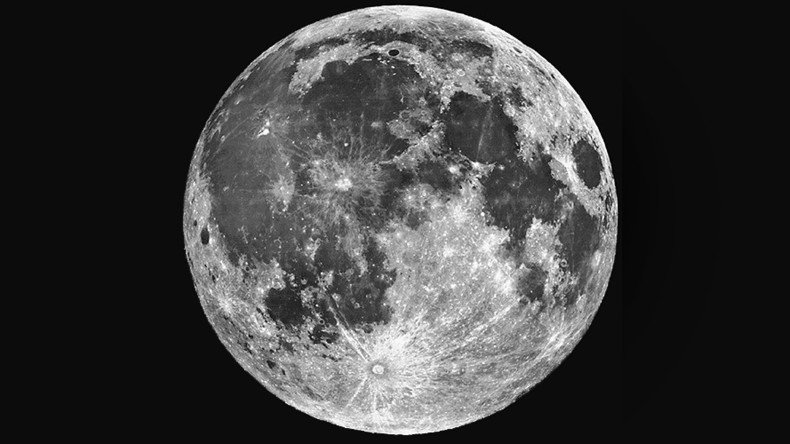NASA to use miles-long tethers in Moon’s orbit to study lunar ‘swirls’

NASA is developing a “novel” new mission that will study the Moon’s mysterious surface patterns using two miniature satellites connected by a 112-mile-long thin tether.
Scientists are hoping the mission will help them better understand how the moon developed the swirling patterns of light and dark that can be found on more than 100 locations across the lunar surface, according to NASA.
The patterns “look almost as if they were painted on the surface of the Moon,” the statement says.
Take a lunge into the lunar swirl called Reiner Gamma via @LRO_NASA More here: https://t.co/ltfJnCCHMGpic.twitter.com/6bQ0mmYgAW
— NASA Goddard (@NASAGoddard) March 27, 2017
NASA’s Planetary Science Deep SmallSat Studies program selected a team at the Goddard Space Flight Center to develop the mission called the Bi-sat Observations of the lunar Atmosphere above Swirls (BOLAS).
READ MORE: Tattooed moon: NASA gains new insight on mysterious ‘lunar swirls’ (PHOTO)
The mission will involve two 12-unit miniaturized satellites, known as CubeSats, which will measure four inches on either side, that will connected by a 112-mile (180-km) long thin tether.
Once the pair reach a “low-maintenance, quasi-stable orbit about 62 miles above the Moon’s surface” they will separate, at the top satellite will climb 118 miles above the surface, and the lower CubeSat would plunge to “about six miles above the surface.”
Scientists used my data & data from other lunar missions to develop the most accepted swirl formation theory (pic: https://t.co/2Kqv4gedm5) pic.twitter.com/n1MJi3SzQf
— NASA Lunar Orbiter (@LRO_NASA) March 28, 2017
Michael Collier, a BOLAS co-investigator who has studied tether-based missions for gathering difficult-to-obtain lunar measurements since 2015, called the concept “exciting” and “groundbreaking.”
“Tethered satellites are a very natural approach for targeting lunar science,” Collier said.
READ MORE: Starshade: Search for ‘other Earths’ boosted by origami-inspired tech (VIDEO)
“The tension in the tether keeps the CubeSats in vertical alignment as they orbit,” said the leader of the study, Timothy Stubbs.
“The configuration, with the center-of-mass in a quasi-stable orbit, should enable the lower CubeSat to fly for long durations at low altitudes,” he added.
Without fuel, the tether system will allow the CubeSats to fly at a low altitude for longer periods of time and for scientists wanting to get a closer look at the moon’s peculiar surface, “the lower they can deploy the CubeSat, the better.”












